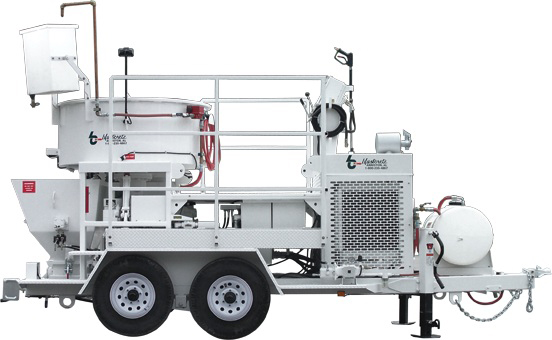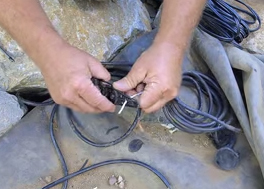pump
Blastcrete Equipment Co. (Anniston, AL) has improved its MX-10 Mixer/Pump system for the application of…
As becomes clear in watching this series of videos, pond installation involves a bunch of specialized skills, from working with the liner and circulation system to moving large rocks and, as we'll see soon, arranging aquatic plants. But completing the project also involves a range of common job-site skills. As we've seen time and again, for instance, you need to know how to measure, fit and glue pipes, and you also need to
Lifegard Aquatics (Cerritos, CA) manufactures All-In-One, a submersible unit that combines mechanical and biological filtration…
Jandy/Zoiac Pool Systems (Vista, CA) offers the VS FloPro, a compact, durable, high-efficiency, quiet-running…
Only three percent of the world’s water exists as fresh water – that is, water with low salinity and total dissolved solids of the sort found in lakes, rivers, reservoirs, ponds, streams and aquifers. It is arguably our most precious resource because, quite simply, we can’t get along without it. As populations grow around the world, the amount of fresh water available for drinking, irrigation, bathing and sanitation annually decreases on a per capita basis. These fresh-water supplies are replenished only by precipitation, so when droughts disrupt historical weather patterns, there’s trouble ahead – especially if the shortages hit highly populated areas. Today, it is estimated that one in six people on our planet lacks access to an adequate water supply. While the vast majority of those who endure this disadvantage live in other parts of the world, we in the United States are becoming more and more subject to supply shortages when localized droughts occur. Recent conditions in the southeastern United States are a prime illustration of what this entails: In Georgia, for example, water supplies recently hit 50-year lows. These conditions resulted in the imposition of all sorts of restrictions on water use, in some areas leading to bans on the installation of new watershapes. At Aquascape (St. Charles, Ill.), we’ve long believed that it’s our responsibility as professional watershapers to act responsibly in such circumstances, meaning in our case that
Recent times have seen the introduction to the pool/spa industry of a new breed of hydraulic pumps that use what is known as 'variable frequency drive' technology. Here, watershaper, hydraulics expert and Genesis 3 co-founder Skip Phillips describes why he believes these devices, which have been used successfully for years in other industries that demand hydraulic efficiency, represent the future for pools, spas and other watershapes. For all the progress made in recent years to change the nature of the game, to this day I still see situations in which pumps, filters and other system components for pools, spas and other watershapes have, hydraulically speaking, been completely



















